The outside of dragon fruit is pink, but the inside is white with black spots. The texture is similar to that of a kiwi, but unlike kiwi, it is not as sweet. The dragon fruit is fantastic in all recipes: fruit salads, smoothies, desserts, or simply served fresh. Furthermore, this fruit is beneficial to guinea pig.
Yes, guinea pigs can eat dragon fruit. It is an excellent fruit for the guinea pig because it provides much-needed vitamin C while avoiding excessive calcium and sugars. The fruit itself may be tasteless, but the cavies will eat it anyway. As a result, it can only be eaten by the cavy 3-4 times per week.
Table of Content
Is Dragon Fruit Good for Guinea Pigs? | Health Benefits
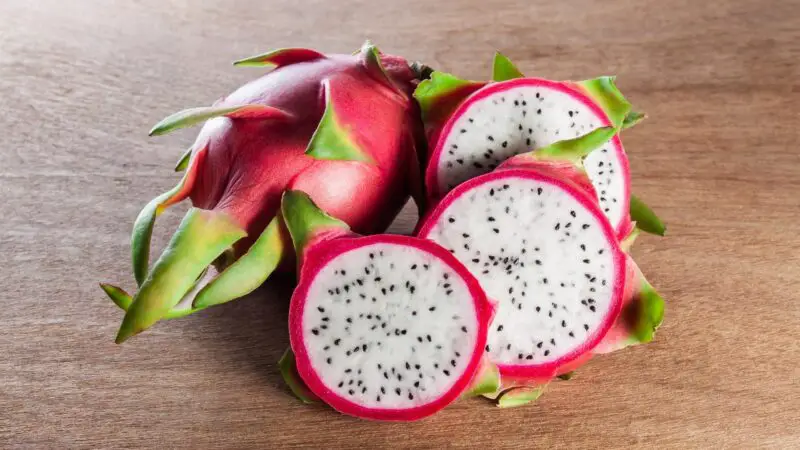
Dragon fruit can help to the scurvy prevention since it has vitamin C. The guinea pigs cannot produce vitamin C by themselves. So, they need lots of vitamin C foods to always be in good health and to survive.
As a result of vitamin C deficit, the guinea pigs are prone to getting the disease scurvy. This disease manifests with a rough coat, appetite loss, diarrhea, fatigue, discharge, weight loss, and wounds on the body that don’t seem to heal.
The dragon fruit has vitamin A, and this is the best antioxidant for an organism. It is beneficial since they fight free radicals, and they make our pet healthier. The free radicals damage the body and make it more prone to chronic illnesses and aging. So, when the organism receives antioxidants, like vitamin A, it has a stronger immune system, more energy, and fewer diseases of any kind.
Dragon fruit has iron. It is crucially important for a healthy body, and of course, healthy blood. With sufficient iron, there is less weakness, fatigue, and disease risk, the immune system is much stronger, appetite is normal, and so on. With lack of iron, there is a risk of anemia – weakness, hair fall, weight loss and loss of appetite.
Also, the dragon fruit has potassium. The potassium regulates the blood pressure to be at normal levels all the time. Overall, the cardiovascular system is much healthier too.
Nutrition Facts of Dragon Fruit
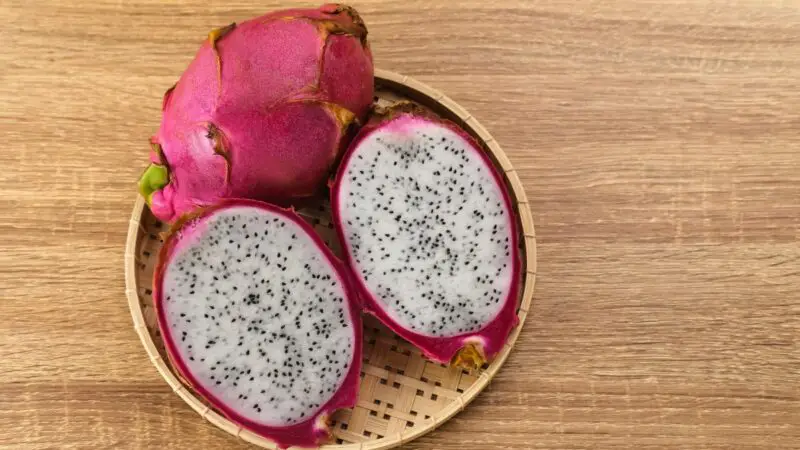
These are the nutrients in 100 g (3 oz) of dragon fruit:
- Low in calories – 51
- Low in fat – 0.38g
- High in carbs – 12.38g
- Low in proteins – 0.78g
- Fiber – 1.7g
- Sugars – 9.61g
- Calcium – 16mg
- Iron – 0.19mg
- Potassium – 192mg
- Vitamin A – 1%
- Vitamin C – 85.1mg
- Vitamin B1 – 0.04mg
- Vitamin B2 – 0.05mg
- Vitamin B3 – 0.16mg
- Phosphorus – 22.5mg
Is Dragon Fruit Bad for Guinea Pigs? | Possible Risks
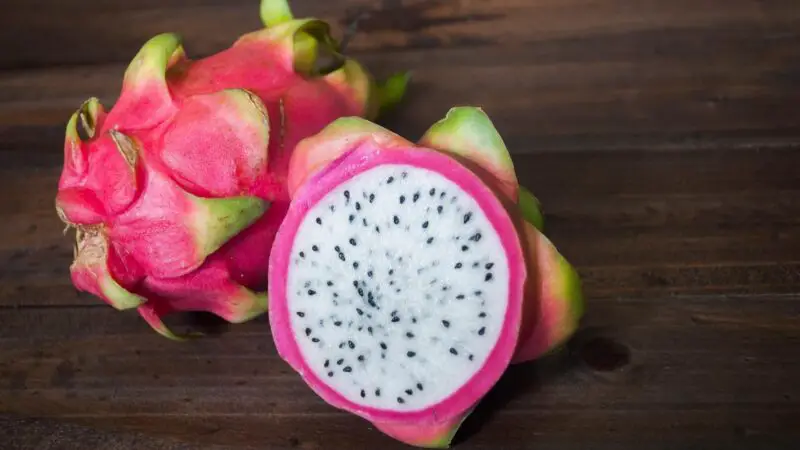
- Rapid weight gain – The dragon fruit is very rich in carbs. The carbs always contribute to weight gain if consumed in excess. And, since this fruit is low in protein, but high in carbs, weight changes are possible.
- Problems with digestion – In dragon fruit, there is sugar. Sugars are not so well digested by guinea pigs. When guinea pigs ingest excess sugars from foods, they have bad digestion (cramps, flatulence, gas, bloating, and loose stool).
- Urinary problems – In dragon fruit, there is also calcium and phosphorus. The calcium and phosphorus bind together to form bone tissues. Excess of these two minerals is not good for grownup guinea pigs. The risk here is problems in the urinary tract, such as blood in the urine, urinary infections, bladder and kidney stones, pain during urination, and urinating too frequent.
Serving Size, Frequency, and Preparation of Endives for Guinea Pigs
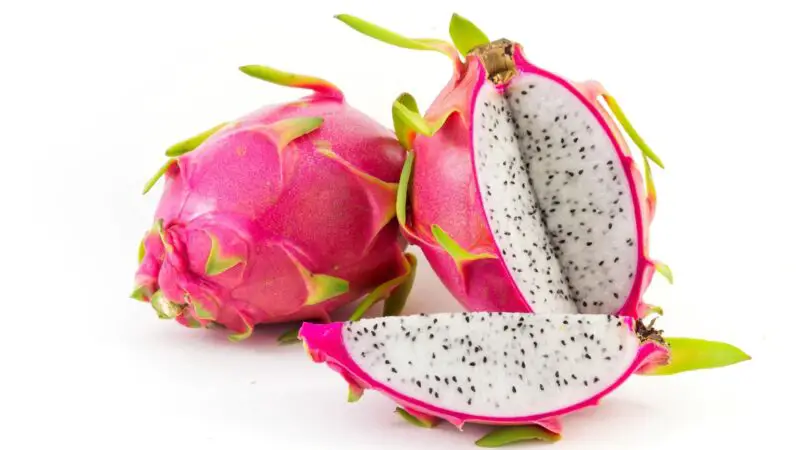
The proper serving size of dragon fruit would be just a ‘few bites’, or a full scoop of the fruit (small handful). You can give this to the guinea pig 4 times per week maximum, not more.
The preparation is simple. Wash the dragon fruit with water several times. Check for any dirt that may have been left behind, and if needed, rinse again. No need to peel the fruit because you can just cut it in half, or lengthwise, and scoop out the fleshy part inside. You can cut this fleshy part in thin slices, to make them easier to chew for the guinea pigs.
More Information About Guinea Pigs and Dragon Fruit
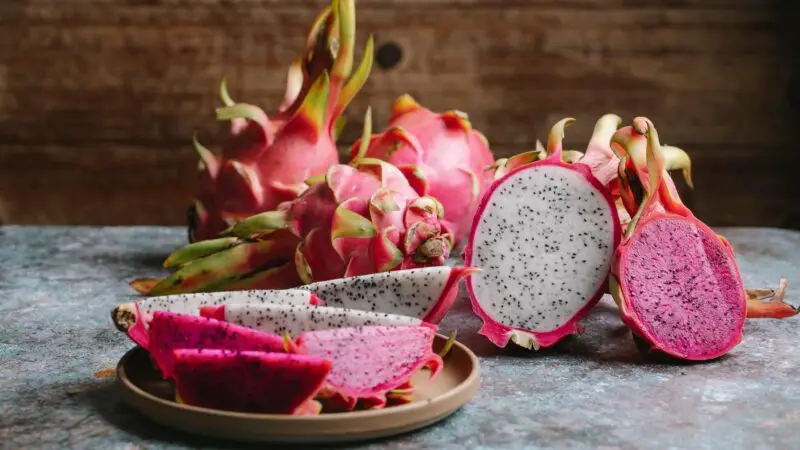
Can The Guinea Pigs Consume the Skin of Dragon Fruit?
Guinea pig should not eat skin of dragon fruit. The skin of the dragon fruit is not edible. It is too hard, not chewy, and is even spikey in some spots as you can notice. So, give only the fleshy part to the guinea pigs.
Dragon Fruit is a New Food for my Guinea Pig, How Do I Make Sure my Guinea Pig Will Like It?
You cannot know for sure until you try giving it to your cute pet. If this is a new food, you should start off slowly, 1-2 times per week. During the feeding time, you can notice if the guinea pig starts to adapt to the taste or not.
Quick Facts on Dragon Fruit
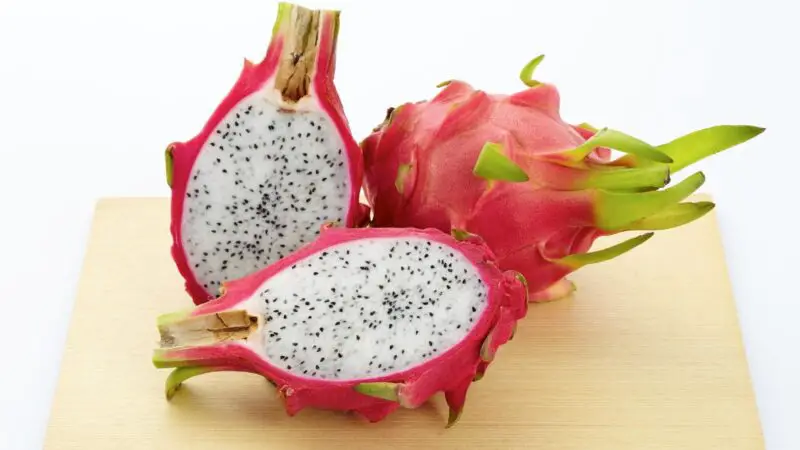
- This fruit is also known as pitaya, strawberry pear, red pitahaya, the belle of the night, night-blooming cereus, and conderella plant.
- The dragon fruit can only grow larger in size if unpicked. It won’t become sweeter if you don’t pick it when it’s time.
- Sometimes the flesh of dragon fruit can be red instead of white. This red flesh contains the antioxidant lycopene. This nutrient can lower the risk of cancers, heart diseases, and hypertension.
- A mix of dragon fruit, cucumber juice, and honey is a natural remedy for sunburnt skin.
- People in Nicaragua make a beverage of dragon fruit (crushed), lime juice, and water, and it is extremely refreshing for the hot summer days!
- The dragon fruit has a flower (a cactus flower). It lasts only one night, and then dies off!
- This fruit is native to Central America, and Mexico. Today, dragon fruit is cultivated in Australia, the Caribbean, and Southeast Asia.
- The name ‘pitaya/pitahaya’ comes from Mexico and the parts of Central and South America. It means something like “tall cactus with flower.”
- The dragon fruit dates back to the 13th century, according to the Aztec literature remains.
We have also made a full list of foods that guinea pigs can and can’t eat (150+ Types of Foods). Be sure to also check our recommended products page for everything you will ever need to assure a happy life for your guinea pigs. Hope this information was helpful and you have found the answer you were looking for.
List of Sources
Nutrient Requirements of Laboratory Animals: Fourth Revised Edition
The Effects of Diet on Anatomy, Physiology and Health in the Guinea Pig
